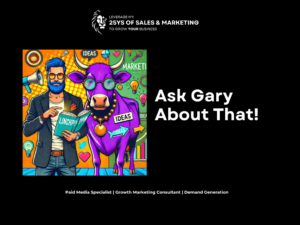In the world of paid media ad campaigns, there’s a pervasive myth that success hinges on getting everything right. Marketers often find themselves in a relentless pursuit of perfection, believing that every decision, every tweak, and every hypothesis must yield positive results. But let’s face it—most things don’t make a difference. Some things do, and that’s where the magic happens. The truth is, making changes in paid media ad campaigns is all about testing, and more often than not, hypotheses are incorrect. But fear not, because this is exactly how it should be.
Embracing the Chaos
Let’s start by acknowledging a controversial truth: the digital marketing landscape is chaotic. Algorithms change, consumer behaviour evolves, and what worked yesterday might not work today. In this ever-shifting environment, it’s unrealistic to expect every campaign adjustment to hit the mark. Instead, marketers must embrace the chaos and recognise that testing is not just a strategy—it’s a necessity.
The Myth of Perfection
The pressure to achieve perfection can be paralysing. Marketers meticulously plan campaigns, armed with data-driven insights and carefully crafted strategies. Yet, despite their best efforts, the reality is that many hypotheses will fall flat. This isn’t a failure; it’s a natural part of the testing process. In fact, it’s through these “failures” that we gain valuable insights and learn what truly resonates with our audience.
The Power of Iteration
In paid media, iteration is king. Each test, whether successful or not, provides a piece of the puzzle. It’s a process of elimination, where incorrect hypotheses are just as important as the correct ones. By systematically testing different variables—be it ad copy, targeting, or bidding strategies—marketers can gradually refine their approach. The key is to remain flexible and open-minded, ready to pivot when necessary.
The Role of Data
Data is the lifeblood of paid media campaigns. It informs decisions, validates hypotheses, and guides future strategies. However, data is not infallible. It’s subject to interpretation, and its insights can be misleading if not analysed correctly. This is where many marketers falter—they become overly reliant on data, expecting it to provide definitive answers. But data is only as good as the questions we ask and the context we provide.
The Danger of Over-Optimisation
In the quest for perfection, marketers often fall into the trap of over-optimisation. They tweak and adjust every aspect of a campaign, hoping to squeeze out every last ounce of performance. But this approach can be counterproductive. Over-optimisation can lead to diminishing returns, where the time and resources spent on minor adjustments outweigh the benefits. Instead, marketers should focus on high-impact changes that have the potential to move the needle.
The Importance of Context
Data without context is just noise. To make informed decisions, marketers must consider the broader context in which their campaigns operate. This includes understanding the competitive landscape, recognising seasonal trends, and accounting for external factors that may influence consumer behaviour. By viewing data through a contextual lens, marketers can make more accurate predictions and develop more effective strategies.
The Art of Experimentation
At its core, testing in paid media is an art form. It’s about balancing intuition with data, creativity with logic, and risk with reward. Successful marketers are those who are willing to experiment, take calculated risks, and learn from their mistakes. They understand that not every test will yield positive results, but each one brings them closer to the ultimate goal: creating campaigns that drive meaningful results.
The Value of Failure
In a culture that often stigmatises failure, it’s important to recognise its value. Each failed test is an opportunity to learn and grow. It provides insights into what doesn’t work, which is just as valuable as knowing what does. By reframing failure as a learning experience, marketers can foster a culture of innovation and experimentation.
The Courage to Pivot
One of the most challenging aspects of testing is knowing when to pivot. It requires the courage to admit when a strategy isn’t working and the willingness to change course. This can be difficult, especially when significant time and resources have been invested in a campaign. However, the ability to pivot is crucial for success in the fast-paced world of paid media.
Conclusion: Focus on What Matters
In the end, the key to successful paid media campaigns lies in focusing on what truly makes a difference. It’s about identifying the high-impact changes that drive results and letting go of the rest. By embracing the art of imperfection and recognising the value of testing, marketers can navigate the complexities of the digital landscape with confidence.
So, the next time you find yourself caught in the pursuit of perfection, remember: most things don’t make a difference. Some things do. And those are the things that matter. Embrace the chaos, trust the process, and let the power of testing guide you to success.









